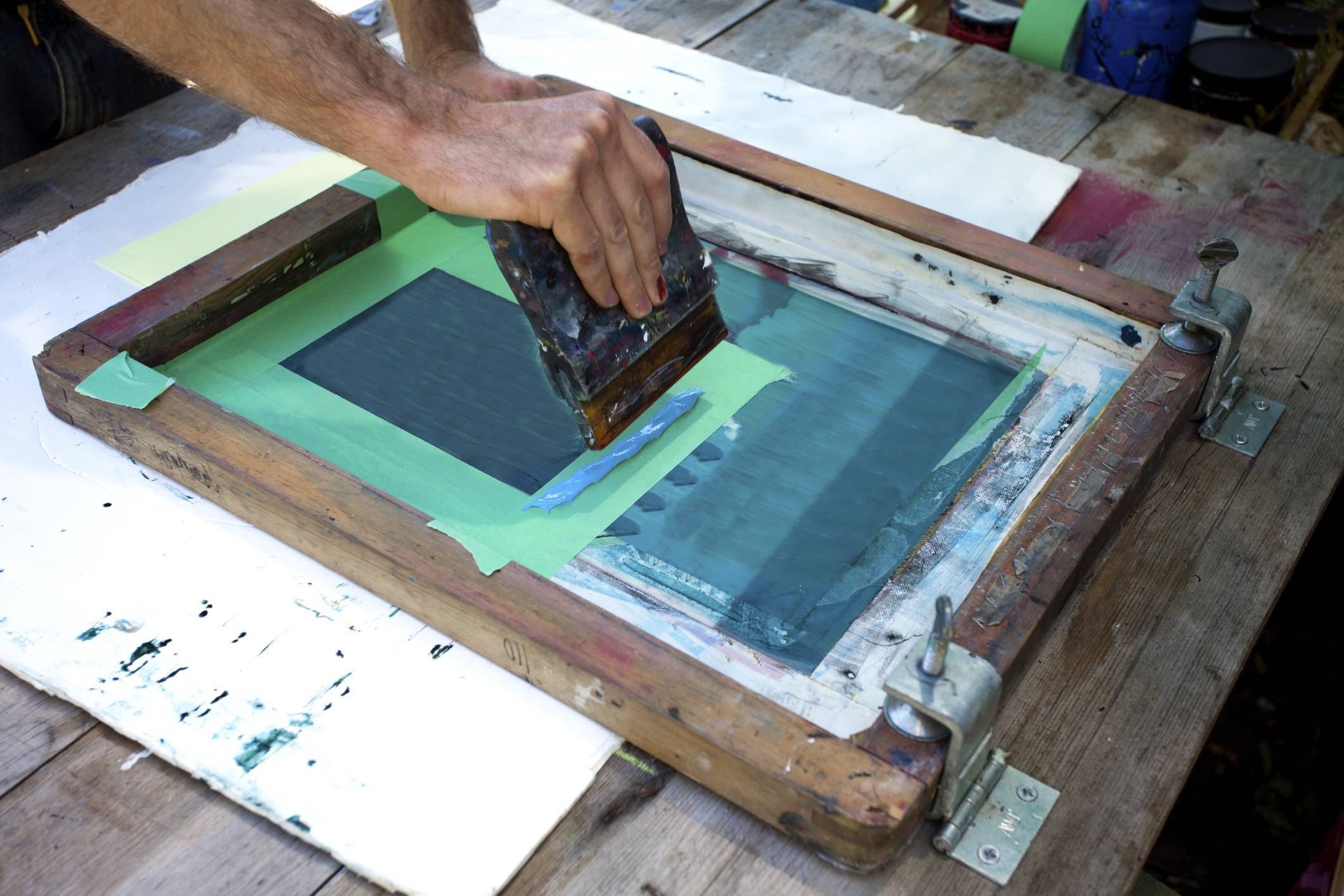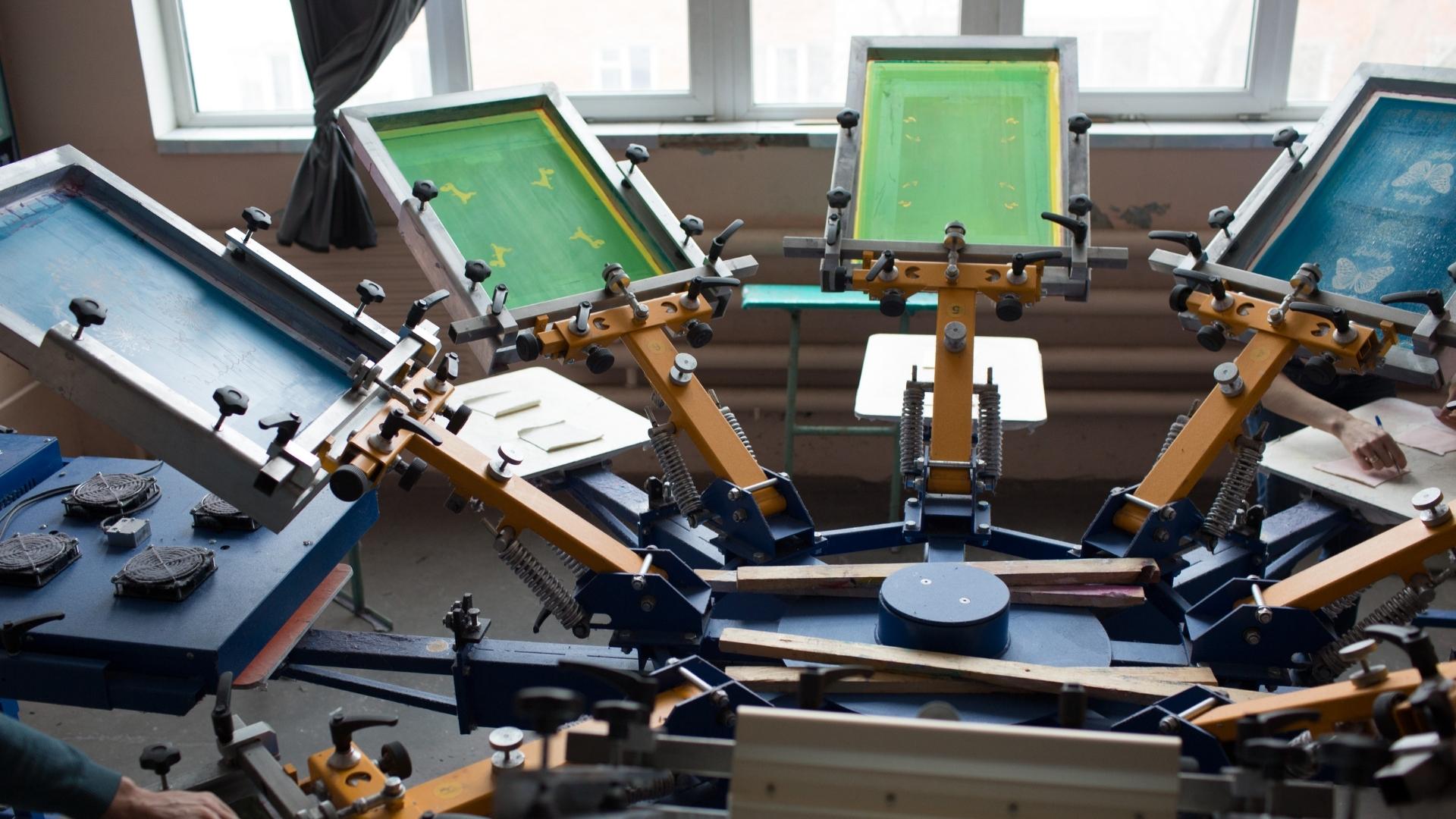ChatGPT said: Top reasons to choose 10:9 Design Embroidery for professional customization
Discover the Different Kinds of Screen Printing Techniques for Your Following Job
Screen printing uses a diverse range of methods that can improve any imaginative project. From traditional methods like serigraphy to modern-day developments such as direct-to-garment printing, each approach has its one-of-a-kind benefits. Specialized options, consisting of environment-friendly and metal inks, introduce a lot more possibilities. Comprehending these techniques can significantly impact the final end result. Nonetheless, the obstacle hinges on choosing the most appropriate method for certain requirements and wanted effects. What factors should one take into consideration?

The Basics of Screen Printing
Screen printing may seem complex, it is basically a simple process that involves moving ink with a mesh screen onto various surface areas. The strategy starts with the production of a pattern, which specifies the design to be printed. This pattern is connected to a mesh screen, generally constructed from polyester or nylon. As soon as the stencil remains in area, ink is applied to the screen and pressed via the mesh utilizing a squeegee, causing the preferred pattern being published on the underlying product.
Screen printing can be executed on a vast array of substrates, including paper, textile, and plastic, making it a functional option for different projects. The procedure allows for vibrant colors and intricate styles, making it prominent in sectors such as art, fashion, and marketing. Comprehending these basics gears up people with the fundamental expertise called for to explore even more innovative methods in screen printing.
Conventional Screen Printing Techniques
Conventional screen printing strategies have actually been utilized for centuries, maintaining the workmanship and virtuosity of this approach. This strategy utilizes a mesh screen to transfer ink onto a substrate, such as fabric or paper, enabling lasting and vibrant layouts. The procedure begins with producing a stencil, which obstructs certain areas of the screen to control where the ink will certainly be applied.
One preferred method is serigraphy, usually made use of for artistic prints and limited versions. An additional is using water-based inks, which are eco-friendly and supply a soft feel on textiles - 10:9 Design Abilene. Additionally, typical methods can include hands-on printing, where craftsmens use ink with a squeegee, making sure accuracy and interest to information
These techniques continue to be valued in the sector for their responsive top quality and the one-of-a-kind appearances they produce, attracting both creators and customers who value the heritage of screen printing.
Digital Screen Printing Innovations
As the need for faster production and modification in the printing industry has surged, electronic screen printing innovations have actually become a game-changer. This innovation blends typical screen printing approaches with digital processes, enabling fast prototyping and intricate styles that were formerly hard to achieve. One significant innovation is the intro of direct-to-garment (DTG) printing, which facilitates top notch, full-color prints on numerous textiles without the demand for displays. Furthermore, innovations in ink solutions have caused environment-friendly choices that keep lively colors while lessening environmental influence. Using automated systems further streamlines production, reducing labor costs and boosting accuracy. These innovations not just satisfy small set orders and tailored layouts yet likewise enable quicker turnaround times, making them optimal for businesses focused on conference consumer needs in a busy market. Digital screen printing, as a result, represents an important development in the domain of printing techniques.
Specialty Screen Printing Approaches
Discovering specialty screen printing techniques exposes a diverse range of methods that press the boundaries of creative thinking and performance in the printing industry. Among these, glow-in-the-dark inks give an one-of-a-kind aesthetic impact, making styles come to life in low-light conditions. Metal inks, understood for their glittering surface, include a touch of high-end to published materials. Another cutting-edge approach is discharge printing, which removes color from the material rather than adding ink, causing a soft, classic feeling. High-density printing creates an elevated texture on the surface area, enhancing tactile engagement. In addition, water-based inks are getting popularity for their vibrant colors and reduced environmental influence. Each of these specialized strategies accommodates certain style requirements, making it possible for brands and musicians to develop standout items that resonate with their audiences. By leveraging these methods, organizations can raise their screen printing tasks to brand-new elevations, ensuring remarkable perceptions.
Eco-Friendly Screen Printing Options
Environmentally friendly screen printing alternatives are acquiring traction as the sector shifts towards sustainability. Sustainable ink selections and using eco-friendly materials are key parts in minimizing the environmental effect of the printing process. By taking on these practices, screen printers can add to a much more lasting future while maintaining top notch outcomes.
Sustainable Ink Selections

Biodegradable Products Use
As the screen printing industry develops, the consolidation of eco-friendly materials is ending up being significantly important for eco mindful methods. Suppliers and developers are currently discovering inks and substrates made from natural, renewable sources that decay much more efficiently than standard equivalents. These eco-friendly choices lower plastic waste and lessen environmental effect, lining up with the growing demand for lasting items.
Usual examples include water-based inks and organic cotton fabrics, both of which decrease dangerous chemicals and promote eco-friendliness. Brands that take on these products typically enhance their market charm, attracting customers who prioritize sustainability. As understanding of environmental concerns remains to increase, the shift in the direction of naturally degradable products in screen printing is most likely to get momentum, promoting a greener sector standard.
Picking the Right Method for Your Task
Just how can one identify the most suitable screen printing technique for a certain project? The choice hinges on several aspects, consisting of the product to be published on, the intricacy of the style, and the desired manufacturing quantity - 10:9 Design Screen Printing. For circumstances, direct-to-garment printing is suitable for complex layouts with various shades, while standard screen printing stands out for bigger runs of less complex graphics
Additionally, factor to consider of the end-use of the printed product is essential. For outdoor applications, strategies that supply resilience and weather resistance, such as plastisol ink, may be preferred. On the other hand, environmentally-conscious projects may benefit from water-based inks or eco-friendly products.
Inevitably, understanding the job's special demands permits an educated selection, making certain both visual charm and useful durability. By reviewing design complexity, product compatibility, and manufacturing range, one my review here can properly select the most suitable screen printing method to satisfy their task's goals.
Often Asked Inquiries
What Is the History of Screen Printing?
Screen printing came from ancient China around 1000 ADVERTISEMENT, advancing with Japan and Europe. By the 20th century, it became prominent in business art and fashion, changing just how styles were created and dispersed internationally.

Just how Do I Prepare Artwork for Screen Printing?
To prepare artwork for screen printing, one should guarantee high resolution, utilize an appropriate color setting, create different layers for every color, and convert text to outlines, assuring compatibility with the printing process and preferred outcome.
What Materials Are Ideal for Screen Printing?
The finest materials for screen printing consist of high-grade inks, sturdy screens, and appropriate substratums like cotton, polyester, or blends. Furthermore, using proper solution and mops can improve the printing process and results.
Can I Evaluate Publish at Home?
Yes, screen printing in the house is possible. With the ideal products, setup, and strategies, individuals can create high-grade prints. Nonetheless, mindful consideration of office and tools is important for effective results.

What Are Typical Errors in Screen Printing?
Typical blunders in screen printing consist of incorrect exposure times, insufficient ink uniformity, imbalance of displays, insufficient cleansing of products, and ignoring to check prints. These mistakes can endanger the high quality and accuracy of the end product.
Screen printing may appear complicated, it is fundamentally an uncomplicated process that involves moving ink via a mesh screen onto numerous surface areas. As the demand for faster production and customization in the printing market has actually risen, digital screen printing developments have emerged as a game-changer. Exploring specialty Home Page screen printing approaches exposes a diverse range of strategies that push the boundaries of creative thinking and functionality in the printing sector. The ideal products for screen printing consist of top quality inks, resilient screens, and ideal substrates like cotton, polyester, or blends (10:9 Design contact). Typical mistakes in screen printing consist of improper direct exposure times, poor ink uniformity, misalignment of screens, insufficient cleaning of products, and overlooking to examine prints